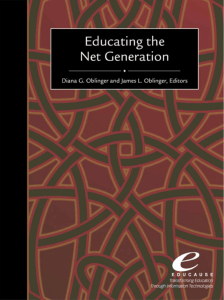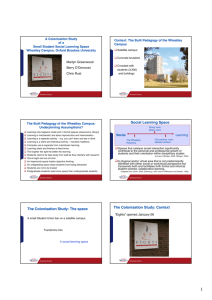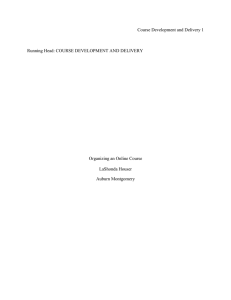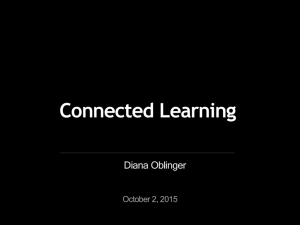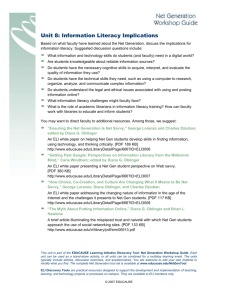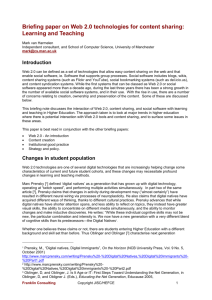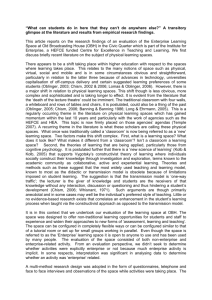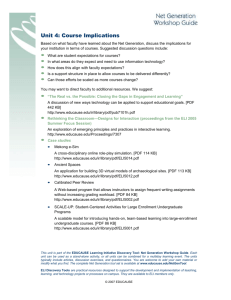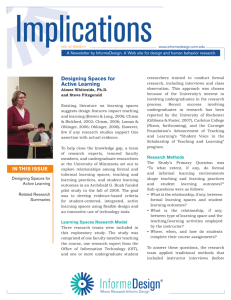The Net Generation
advertisement
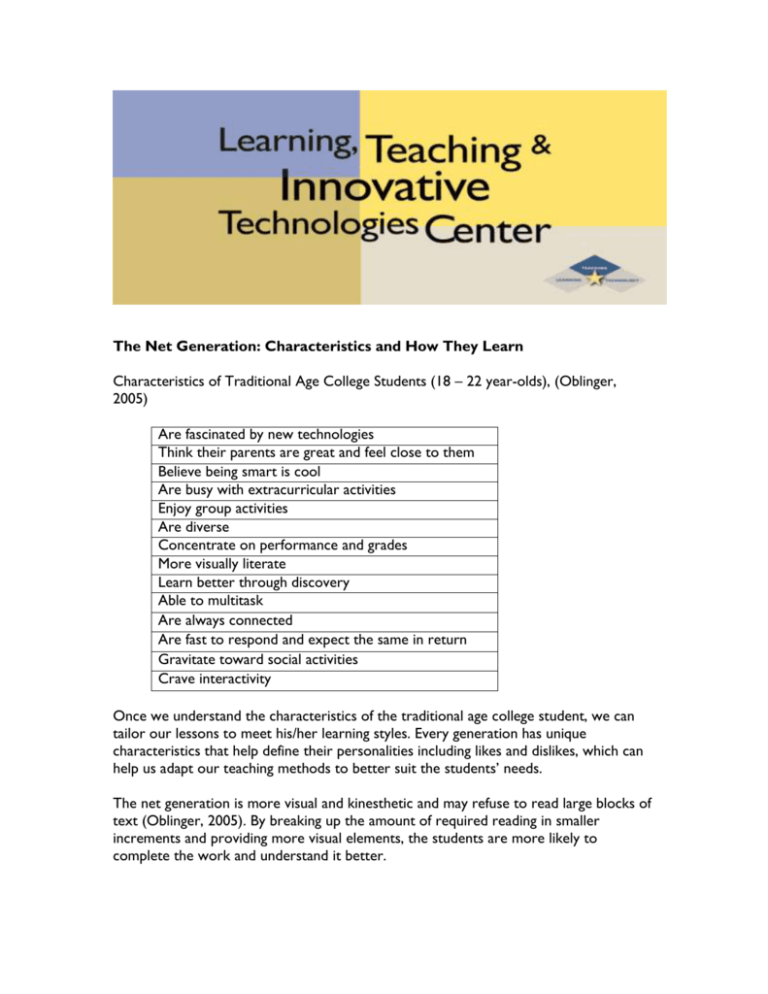
The Net Generation: Characteristics and How They Learn Characteristics of Traditional Age College Students (18 – 22 year-olds), (Oblinger, 2005) Are fascinated by new technologies Think their parents are great and feel close to them Believe being smart is cool Are busy with extracurricular activities Enjoy group activities Are diverse Concentrate on performance and grades More visually literate Learn better through discovery Able to multitask Are always connected Are fast to respond and expect the same in return Gravitate toward social activities Crave interactivity Once we understand the characteristics of the traditional age college student, we can tailor our lessons to meet his/her learning styles. Every generation has unique characteristics that help define their personalities including likes and dislikes, which can help us adapt our teaching methods to better suit the students’ needs. The net generation is more visual and kinesthetic and may refuse to read large blocks of text (Oblinger, 2005). By breaking up the amount of required reading in smaller increments and providing more visual elements, the students are more likely to complete the work and understand it better. Students today crave interaction (Oblinger, 2005) – they want to be active participants in the classroom. We can get them involved through Socratic questioning, games, discussions, group projects, presentations and peer teaching. Janet McCormick, assistant professor in Speech and Theatre at MTSU, uses games to actively involve her students. Once a week, the students divide into groups of three to four people to play games such as Taboo, Outburst, and Pictionary that have been adapted to fit the curriculum. “It is a fun way to learn,” remarked McCormick. “They keep a reflective journal of the process and how others in their group respond and learn.” McCormick’s teaching method of incorporating games into the learning appeals to several of the net generation characteristics such as: preference for group activities, interactivity, gravitation to be social, and their fast response. Kathy Patten, Assistant Professor in Educational Leadership at MTSU, combines technology, group projects, and discovery in the majority of her class assignments. “In the hybrid classes I teach, I always have at least one group project where the students communicate within their group through the WebCT discussion board and meet physically to work on and complete their projects,” Patten stated. “I also have the students post the finished project on a webpage or wiki for the other groups to review.” Ms. Patten’s students are learning through active participation in a group, by conducting research, forming a hypothesis, and by collaborating with others to complete the project. They are discovering information from their research and from their peer’s work. Understanding the characteristics of the net generation can help us connect with them better. They crave interaction and like visual components (Oblinger, 2005). Graphic planners or mapping can be easily applied to any discipline, or showing related images from the Internet, movies, or library can help facilitate the lesson. Ask questions. Get the students involved in discussions and get to know them. They want to learn, but we have to adapt our teaching to their learning styles in order to improve retention. REFERENCES Oblinger, Diana G. and James L. Educating the Net Generation. Educause, North Carolina State University, 2005. Educating the Net Generation is available electronically from the Educause website at www.educause.edu/educatingthenetgen/.
